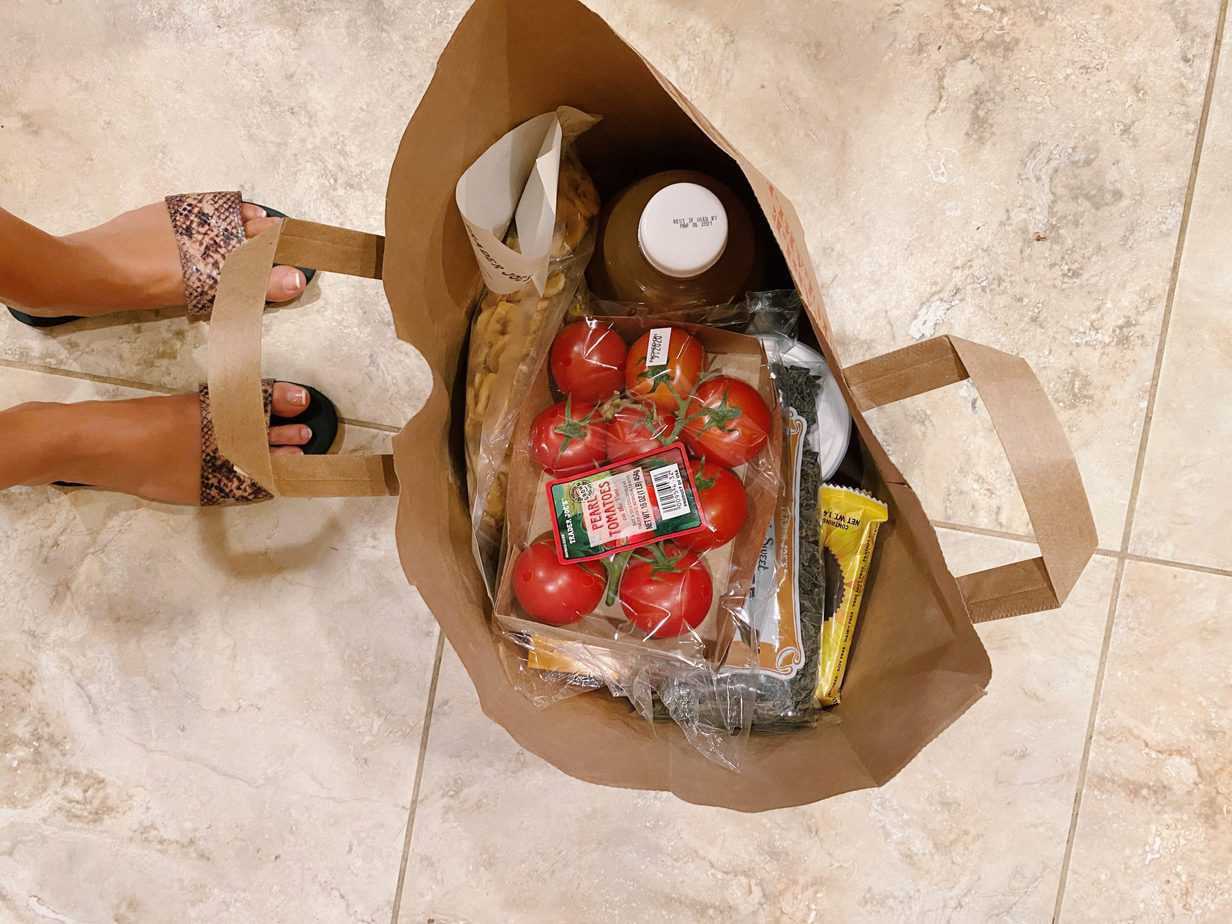Living alone comes with a variety of challenges – including grocery shopping for yourself while sticking to your budget.
I remember the first time I bought groceries for myself and finally got to the check-out stand only to realize that the total was way above $100. Without realizing, I just spent at least $40 more than I had budgeted to spend on groceries for that week.
At that moment, I fully understood what my mom had been preaching for years and years growing up. Groceries are not cheap! The average American spends $314 to $516 on groceries per month (depending on the location).
In this article, I will share some simple and easy tips that I have learned over the years to build a cheap grocery list that is still considered healthy and nutritional.
You will be able to build a healthy and cheap grocery list in 6 simple steps:
- Figure out what you need to buy
- Write out a grocery list before you leave your house
- Add cheap (but healthy) foods
- Opt-in for frozen vegetables versus fresh
- Load up on fruits
- Keep track of what you bought and when each item expires
Let’s take a closer look at each step and what you should consider doing before heading to the grocery store.
1. Figure out what you need
Before making a cheap grocery list, you need to figure out what you need to buy at the store.
Figuring out what you need to buy before heading to the grocery store is an essential step. By just taking 10 minutes to go through your pantry and fridge before you leave, you can eliminate buying unnecessary groceries that you didn’t think you had. There have been numerous times I left for the grocery store in a rush, only to come back home and see the SAME spice I already had sitting in the pantry.
2. Write out a list before you leave
Have you ever left your house, not knowing what you need? Or worse – getting back home and realizing that you not only missed a vital ingredient but bought something unnecessary instead. (we all know what that unnecessary item is for us)
After going through your pantry and fridge, write everything you need down. You can write your list down on a sticky note, napkin, or on cell phone notes.
It is also a good idea to write down your goal spending amount on that same list, so that it can be top of mind. If you don’t know how much you should spend on groceries, read my article about how much you should allocate for your “needs” here.
3. Add cheap (but healthy) foods
Contrary to popular belief, eating healthy does not have to be expensive.
You can eat healthy while sticking to a cheap grocery list. Some of the most nutritious foods are very cheap. Below are a few of my favorite cheap healthy foods averaging around $2-3 per item.
Eggs
Eggs should be on all cheap grocery lists. Eggs are full of good fats and protein to last you throughout the day. Eggs are also very affordable. The average price for a dozen of eggs in California ranges from $2.75 to $3.30 per dozen)
Brown Rice
Brice rice is a very versatile staple for cooking. Brown rice also has many health benefits as a whole grain that promotes feeling full and lower cholesterol. The average cost of a pound of brown rice costs about $1.75
Nonfat greek yogurt
I love nonfat greek yogurt! Nonfat greek yogurt can be used to make many dishes but is also good on its own. I use it in smoothies and for desserts (topped with a little honey and blueberries!) The average cost for individual yogurt is generally below $1.
Oats
Old-fashioned oats are full of nutritious antioxidants and fibers. It is usually cheaper to buy the large container of oats that you cook on the stove (versus individual instant packages). Most oatmeal containers are about $3 and will last you for months.
Canned items
Some canned items that are always on my list include black beans, corn, tuna fish, sauces, and soups. Canned foods not only last a long time but are also usually under $3.

4. Opt-in for frozen vegetables versus fresh vegetables
One of my favorite things to add on my cheap grocery list is frozen vegetables. Not only will frozen foods last longer, but they are also generally a few dollars less expensive than buying fresh vegetables. For example, at Trader Joes, fresh brussels sprouts will cost me almost $5 for fresh versus $3 for frozen.
5. Load up on low-cost fruits
Most fruits are very cheap. For example, banana prices often range somewhere around $0.50 per banana. Bananas can be a great snack food that contains high potassium and fiber. You can even freeze them for a simple and yummy dessert!
Apples are another cheap and healthy food to add to your cheap grocery list. Apples are a simple and delicious fruit that costs less than $1 each.
6. Keep track of what you bought and when it expires
Lastly, the last cheap grocery list tip that I have is to keep track of what you bought at the grocery store. Since food goes bad so easily, it is good to track what you bought and when it expires.
The easiest way to do this is to buy a magnetic fridge whiteboard and write down what you purchased and when it expires right when you come back from the grocery store. This list will motivate you actually to eat what you buy!
Final thoughts
Overall, saving money at the grocery store does not have to be hard. With just a few simple tips, you can create a cheap grocery list that is healthy and affordable. Make sure to figure out what you need to buy, write out a list, purchase low-cost healthy foods, opt-in for frozen veggies, buy lots of fresh fruit, and keep track of expiration dates.
I would love to know how you save money at the grocery store. Leave a comment below!

Ashley is a finance graduate from the University of San Francisco and currently works at a financial technology startup in San Francisco that is focused on providing affordable and accessible 401(k) retirement plans to other startups and small businesses. Prior to working at a startup, she was an associate at a large private wealth management firm working with high-net-worth clients. She is born and raised in Orange County, CA, and loves spending time at the beach, in a pool, reading, and with her friends.




Great advice especially in these difficult times.